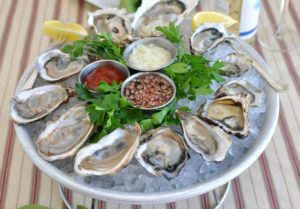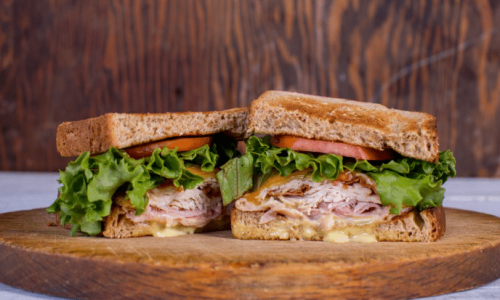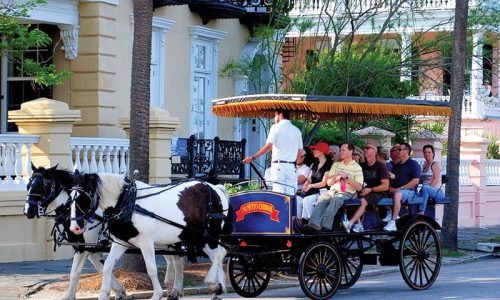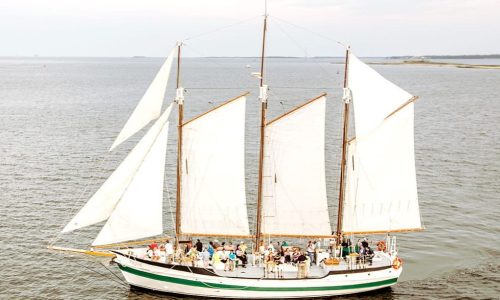By Barry Waldman
In clusters at an oyster roast or as an appetizer on the half shell; fried, steamed, roasted, grilled, broiled, smoked or baked; soaked in lemon juice or bathed in mignonette sauce; cooked up in a stew or a soup – Charlestonians love their oysters. And not just any oysters, but Lowcountry oysters, a variety of bivalve mollusk that transports the high tide and pluff mud to the palate.
Charleston oysters are unique because of their location. Oysters feed by daily filtering 30-50 gallons of the flowing water for phytoplankton, resulting in a taste profile that reflects their home. In the fast-moving tides that roil local estuaries with ocean water, Lowcountry oysters pick up the briny taste of the Atlantic with the sweet finish of nutrient-rich soil.
“When you eat our oyster, you’re literally kissing the Lowcountry on the lips,” said Frank Roberts of Lady’s Island Oysters, just south of Edisto Island in Beaufort County. Roberts sells his oysters to iconic Charleston seafood restaurants like The Ordinary, Amen Street and The Darling.
Oysters all year long
Oysters from the mid-Atlantic, New York, New England and the Canadian Maritimes all have their own flavors, and many of them are featured in Charleston restaurants alongside the hometown variety. But the voracious appetite of Lowcountry residents and visitors prevents much exportation of the local catch. So if you want to sample the unique stylings of the Lowcountry’s best, you have to do it here.
And you can do it anytime, said Noah Singerman, general manager of Leon’s Oyster Shop on upper King Street. The old adage about only eating oysters in months with an “R” is obsolete, he said. “Usually my reply is that might have been true before the invention of ice.” New techniques adopted by oyster farmers that keep oysters submerged in cooler mud all the time have extended the growing season year-round.
Oysters can be divided between clusters and singles. Clusters grow in the wild, where oysters glue themselves together for protection. They are harvested inexpensively and used in oyster roasts, a staple of Lowcountry life.
“You might have a tailgate with hot dogs and hamburgers somewhere else, but here but we have roasts instead,” says Erin Perkins, editor of Eater Charleston. She believes it’s the camaraderie of shucking and eating together, more than the food itself, that makes Lowcountry oyster roasts ubiquitous.
Longtime Charleston resident Laurie Benjamin agrees. “Oyster roasts mean family to me — we have them at every holiday gathering and they are enjoyed by all ages.”
Single oysters are generally grown from eggs, incubated by humans and then submerged in local waters to grow to maturity. Because of the expertise and TLC required, they are more expensive. Those are the oysters you order on the half shell and slurp down raw. Oyster farming is a $1 million enterprise in South Carolina, according to Julie Davis, living marine resources specialist at the S.C. Sea Grant Consortium, part of the state’s $4-5 million oyster industry.
Because of their salty, earthy flavor profile, Lowcountry oysters may be an acquired taste. For oyster novices, most recommend baby steps. “I started very slow with a saltine and a lot of cocktail sauce,” said Eater Charleston’s Perkins. “Then maybe a roasted oyster, and then maybe a mix, and now straight from the sea.”
Adds Candice Herriott, a food blogger at #CHSFoodWriter and author of “Provisions to Plate,” which highlights the local food scene from a seasonal perspective, “I had to eat them for several years before trying oyster on the half shell.”
Eating oysters is an act of environmental activism too. As filters, oysters keep local waterways clean, and the recycling of their shells back into waterways creates new environments for the next generation of oysters. “There is no greater steward of the environment than a shellfish farmer because without clean water they’re out of business,” said the Sea Grant Consortium’s Davis.
The versatility of oysters
All that said, 2 inches of oyster meat is hardly a meal, so something has to accompany it. Here’s the good news: “Oysters are one of the few ingredients that you can have a million different ways,” said Joe DiMaio, chef at The Darling Oyster Bar on King Street.
Shrimp is a natural partner, said Singerman of Leon’s. So, too, are lobster and mussels. “If it grows together, it goes together.” Even fried chicken works, he said. If it complements oysters, or contrasts with them, it can accompany them.
DiMaio likes oysters as an ingredient in more complex dishes. He suggests visitors try smoked oyster dip, oyster stew or chowder, or oyster over pasta. The saltiness of oysters works well with something cheesy, creamy or smoky like bacon. Salads, green vegetables, potatoes and bread all round out an oyster dish.
And to drink, a cold beer, dry white wine or champagne. Says Singerman, “The green apple note of champagne works well with oysters.”






















